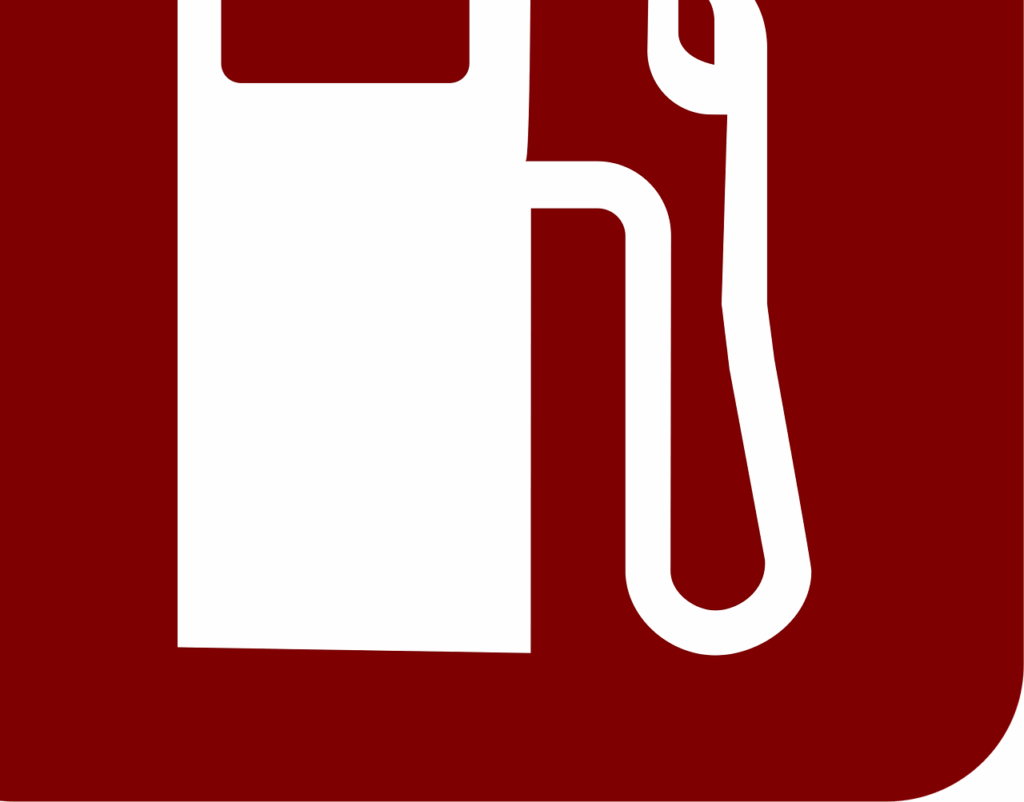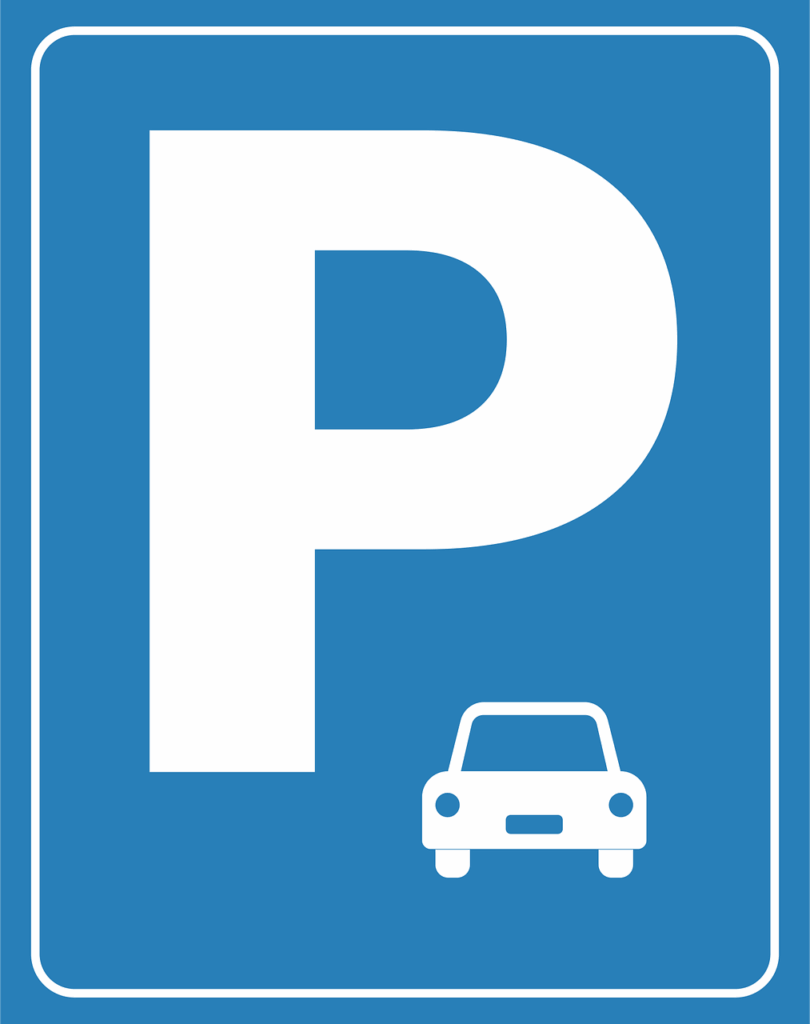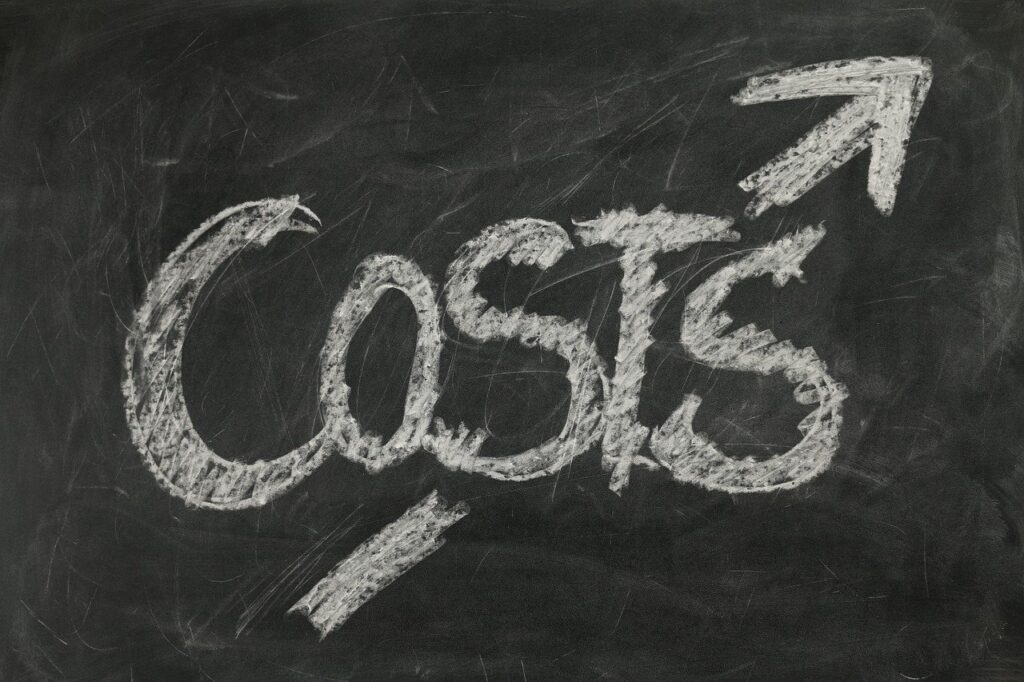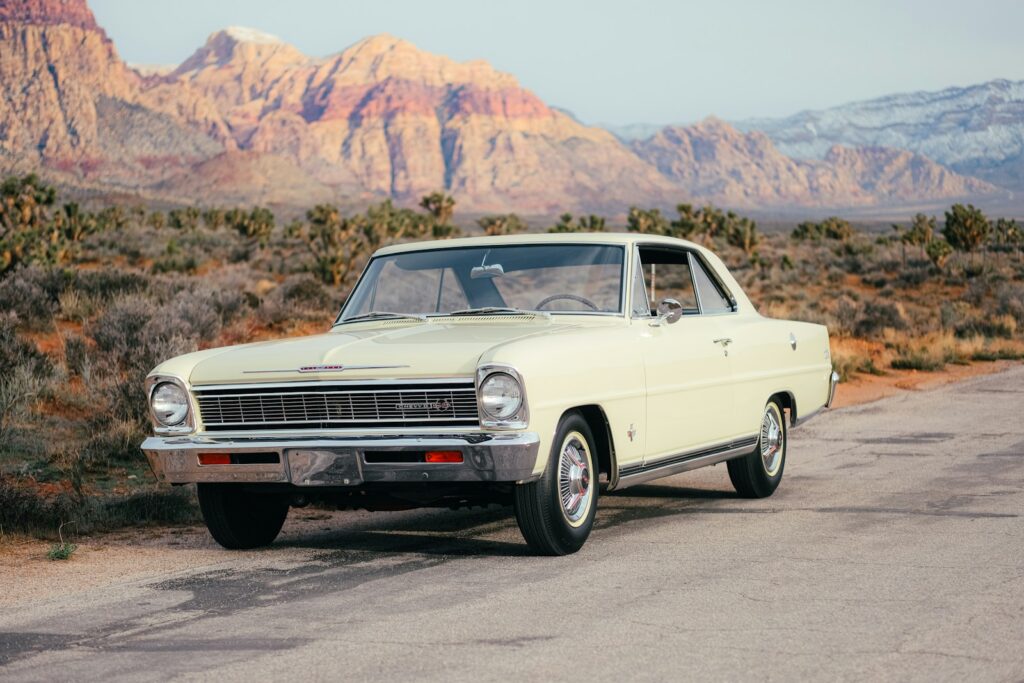For many, the allure of a new car represents freedom, convenience, and a significant personal milestone. The anticipation of driving a gleaming vehicle off the lot often overshadows a crucial reality: the initial purchase price is merely the entry point to a complex and often underestimated financial commitment. This initial transaction, whether a cash payment or a financed loan, opens the door to a cascade of expenses that continue throughout the vehicle’s lifespan, many of which remain hidden until they manifest as unexpected strains on personal budgets.
Indeed, understanding the total cost of car ownership is not just a matter of diligence; it is a critical component of sound financial planning. In 2024, the average cost to own and operate a new car was reported as a striking $12,297 annually, a figure that comprehensively encompasses the myriad outlays beyond the sticker price. From escalating interest rates to surging insurance premiums and the inevitable demands of maintenance, these expenses collectively represent a substantial drain on personal finances, often surprising even the most prepared car owners.
This in-depth examination delves beyond surface-level information to uncover these often-overlooked financial dimensions of vehicle ownership. By meticulously detailing the hidden costs that can profoundly impact a household’s budget, this article aims to equip current and prospective car owners with the comprehensive knowledge necessary to make informed decisions, mitigate financial surprises, and genuinely comprehend the full economic implications of placing a car in their driveway.

1. **Depreciation: The Silent Drain on Your Investment**
Depreciation stands as one of the most substantial yet frequently overlooked costs associated with car ownership. It represents the rapid decline in a vehicle’s value from the moment it is purchased, directly impacting its potential resale or trade-in value. This financial erosion begins instantaneously; a new car can lose a significant portion of its value within the first few years, with many vehicles shedding up to 20% of their worth within the first year of ownership alone.
Following this initial drop, the rate of depreciation typically continues at approximately 15% annually until the car reaches around five years of age. By this juncture, a vehicle will have already forfeited over half of its original value. This dramatic loss highlights a critical financial consideration, particularly when viewed through the lens of long-term investment strategies; unlike appreciating assets, a car’s value is in a continuous state of decline.
This profound rate of depreciation is a primary reason why financing a new car for extended periods—specifically, for more than 60 months or five years—is strongly discouraged by financial experts. Prolonged loan terms mean that owners often owe more on their vehicle than it is worth, a situation commonly referred to as being ‘upside down’ on a loan. This condition can severely complicate future trade-ins or sales, potentially forcing owners to pay out of pocket to cover the deficit before acquiring a new vehicle.
Ultimately, understanding depreciation as a core cost, even if not a direct monthly payment, is vital for realistic financial planning. It shapes budgeting for future car purchases and underscores the importance of considering a vehicle’s long-term value retention when making a buying decision, influencing choices towards models known for better resilience against value erosion.
Read more about: Hybrid vs. Electric Cars: The Definitive Guide to Which One Truly Saves You Money (Shocking Truth)
2. **Insurance Premiums: A Soaring and Unpredictable Burden**
Car insurance premiums represent a substantial and escalating ongoing expense for vehicle owners, demonstrating a volatility driven by a confluence of factors. These costs are particularly impactful for specific demographics, such as younger drivers, individuals with less-than-perfect driving records, or those who own vehicles that are inherently more expensive to insure due to their make, model, or repair costs. Even an individual’s credit score can exert an influence on the rates they are quoted for auto insurance.
The year 2023 saw a significant surge in car insurance rates, climbing an average of 24%. This notable increase was largely propelled by a combination of factors including the rising expense of vehicle repairs, the growing frequency and severity of natural disasters, and an overall uptick in car accidents. The rising repair costs, in particular, are tied to the broader trend of higher car prices that automakers have been normalizing since 2021, meaning even minor incidents now translate to more expensive fixes.
For the average driver in 2025, the national average premium for a full-coverage policy is projected to be $2,019 per year, translating to approximately $168 per month. While state-minimum liability insurance offers a cheaper alternative at an average of $1,154 annually, it provides substantially less protection in the event of an accident, potentially leaving drivers exposed to significant out-of-pocket expenses. This continuous escalation of auto insurance rates, year after year, often outpaces wage growth, leading many drivers to observe that a larger portion of their income is being allocated to maintain this essential coverage.
Furthermore, the issue of uninsured motorists adds another layer of financial risk and cost to insured drivers. With a notable percentage of American drivers lacking insurance—as high as 29.4% in states like Mississippi and an overall national average of 12.6%—the potential for accidents involving uninsured parties remains a concern. While fewer than half of states mandate uninsured motorist insurance, those who opt for this coverage see a slight increase in their monthly premiums. However, for those without it, an accident with an uninsured driver can mean shouldering the entire repair bill or medical costs, even if they are not at fault, underscoring the complex financial implications of this pervasive expense.
Read more about: Unmasking the True Price: 14 Hidden Costs That Turn Car Ownership into a Financial Maze for Every Driver

3. **Maintenance and Repairs: From Routine Upkeep to Unexpected Crises**
Maintaining a car in optimal running condition necessitates a consistent financial outlay for regular maintenance, with costs that can accumulate steadily over time. Beyond routine tasks such as oil changes, tire rotations, and brake pad replacements, drivers face the constant specter of unexpected repairs, which are inherently unpredictable and often carry substantial price tags. In 2023, data from AAA indicated that drivers averaged 9.83 cents per mile driven on maintenance, repairs, and tire replacement, translating to an annual cost of $1,474 for an average American driving 15,000 miles per year.
The economic significance of car maintenance is such that even the Federal Reserve closely monitors prices, with their data revealing a significant escalation in motor vehicle parts and equipment costs since the onset of the COVID-19 pandemic. This trend underscores a broader financial reality for car owners: the components and labor required to keep vehicles on the road are becoming increasingly expensive. While new vehicles often come with warranties and sometimes free dealer maintenance for the initial years, these protections diminish over time, leading to higher out-of-pocket expenses as cars age.
Crucially, maintenance costs are not uniform across all vehicles; they vary considerably by make and model. This variation highlights an important strategic consideration for car buyers: selecting a vehicle known for its reliability and relatively inexpensive parts can be a proactive measure against the costliest repairs. Neglecting routine maintenance, such as skipping a $40 oil change, can lead to far more severe and expensive problems down the line, potentially escalating to a $4,000 engine replacement. Modern vehicles, with their integrated sensors, cameras, and advanced technology, also present a new frontier of repair costs, as even minor issues with these sophisticated systems can result in hefty bills.
Therefore, budgeting for maintenance is an essential component of responsible car ownership, much like budgeting for essential household expenses. It ensures the longevity, safety, and fuel efficiency of the vehicle, protecting the investment and preventing unforeseen financial shocks. Proactive care is not just about keeping the car running; it’s about strategically managing a significant aspect of its total cost of ownership.

4. **Fuel Costs: The Volatile and Inescapable Expense**
The cost of fuel constitutes a regular and often significant expense for car owners, characterized by its inherent volatility and capacity for wild fluctuations. For individuals who drive extensively or operate less fuel-efficient vehicles, this expense can quickly become a substantial portion of their monthly budget. Considering the typical American car achieves an average of 25 miles per gallon in 2025, and with gasoline priced at $3.50 per gallon, an average American driver covering 15,000 miles annually will spend approximately $2,100 each year on fuel alone. Hybrid vehicles, which frequently exceed 50 miles per gallon, offer a tangible pathway to halve this considerable expenditure.
The landscape of fuel costs also encompasses electric vehicles (EVs), presenting a different set of financial dynamics. Charging an EV at home generally proves to be the most economical option, often being significantly cheaper than purchasing gasoline. Typically, it costs between $10 and $20 to charge an EV battery from empty to full capacity at home, utilizing average American electricity rates. This domestic charging capability is a primary driver for EV owners’ annual fuel savings compared to gasoline-powered cars, with most EV drivers conducting the vast majority of their charging at home.
However, public fast-charging stations introduce a greater variability in pricing, paralleling the potential for wide fluctuations observed in gasoline prices. A favorable rate for EV charging is generally considered to be under $0.45 per kilowatt-hour of electricity. Yet, some public charging stations charge upwards of $0.65 per kWh. With the average EV battery possessing a 75 kWh capacity, public charging can, in certain scenarios, become as expensive as, or even more costly per mile driven, than gasoline. This stark disparity in public charging rates highlights a crucial aspect of EV ownership: while home charging offers considerable savings, reliance on public infrastructure can erode some of the anticipated fuel cost advantages.
Consequently, whether powering a gasoline vehicle or an electric one, fuel remains an undeniable and substantial ongoing expense. Its unpredictable nature necessitates diligent budgeting and a keen awareness of both driving habits and available charging or refueling options to effectively manage this critical component of car ownership.

5. **Financing Costs: The Long-Term Weight of Interest**
The process of financing a vehicle introduces a significant layer of expense in the form of interest on auto loans, which directly contributes to the total cost of car ownership. This financial burden has been particularly exacerbated in recent years by a convergence of factors: increasingly higher car prices, today’s elevated interest rates, and the common practice of extending loan terms. In 2025, the average interest rate for a new car loan stands at 9% APR, while used car loans, reflecting a higher perceived risk, average 13% APR.
These rates translate into substantial additional costs over the life of a loan. Financing a new car over a typical 60-month (five-year) term can result in thousands of dollars being paid solely in interest, unless a buyer is fortunate enough to secure favorable new car financing offers, often characterized by lower APRs. The temptation to extend loan terms further, to 72 or even 84 months, while seemingly reducing monthly payments, dramatically escalates the total interest paid, making the car considerably more expensive in the long run.
For instance, the significant impact of interest rates can be illustrated by the difference a few percentage points make over the loan’s duration. A higher APR, combined with a longer term, can transform an ostensibly affordable monthly payment into a cumulative sum that far exceeds the vehicle’s sticker price. This phenomenon underscores the critical importance of actively shopping around for the most competitive financing rates and, whenever financially feasible, opting for shorter loan terms to mitigate the overall interest burden.
Understanding these financing dynamics is paramount. It shifts the focus from merely the monthly payment to the comprehensive total cost, empowering buyers to analyze the true financial commitment before signing an agreement. Leveraging tools like auto loan payment calculators to model interest accumulation under various scenarios can provide invaluable insight, ensuring that the excitement of a new vehicle does not lead to an unforeseen and substantial increase in the long-term cost of ownership.
Read more about: Precision Spending: 12 Budgeting Underdogs That Dominate Financial Debt
6. **Taxes and Government Fees: The Annual Regulatory Catch**
Beyond the sticker price and ongoing operational costs, car ownership entails a recurring suite of state and local taxes and fees that can accumulate rapidly and often go unanticipated in initial budgeting. These include sales tax, which is typically a one-time expense at the point of purchase, alongside recurring registration fees and annual renewal fees. The specific charges and their magnitudes vary considerably from state to state, introducing a complex and diverse regulatory landscape for vehicle owners.
For example, some jurisdictions impose annual property taxes specifically on vehicles, adding an extra layer of expense that further contributes to the overall cost of ownership. These taxes are often calculated based on the vehicle’s assessed value, meaning that newer or more expensive cars will incur higher annual charges. The diversity of these fiscal demands underscores the necessity for prospective owners to research their specific state’s vehicle tax and fee structure thoroughly before committing to a purchase.
Furthermore, the growing adoption of electric vehicles (EVs) and hybrids has introduced new categories of fees. Many states now levy an extra annual registration fee on these vehicles, designed to compensate for the lost revenue traditionally collected through gasoline taxes. These compensatory fees can range from a modest $50 to over $200 per year, depending on state policy, directly adding to the annual financial burden for owners of environmentally friendlier cars. This regulatory adaptation highlights an evolving aspect of car ownership costs, as governments adjust fiscal strategies to changing automotive landscapes.
Consequently, a comprehensive financial plan for car ownership must explicitly account for these diverse state and local charges. Failing to anticipate sales taxes, registration renewals, and any applicable property or EV fees can lead to unexpected financial strain. Proactive research and diligent budgeting for these mandatory governmental levies are essential steps in managing the true and total cost of putting a car on the road and keeping it legally operational.

7. **Parking Fees: The Urban Driver’s Constant Companion**
For drivers navigating urban and densely populated areas, parking fees represent a pervasive and often underestimated hidden cost of car ownership. Whether it involves securing a monthly permit for a designated garage space, feeding a parking meter during a quick errand, or utilizing hourly parking facilities, these intermittent expenses can accumulate surprisingly quickly, creating a continuous financial drain that often goes unacknowledged in broader budget calculations.
In cities, the costs associated with parking extend beyond mere convenience. Parking permits themselves can be quite expensive, reflecting the premium placed on space. Moreover, the risks associated with improper parking—ranging from minor infractions to towing—can result in significantly higher penalties. Should a vehicle be towed for violating parking regulations, the owner faces not only the initial citation but also towing and impoundment fees, which can quickly escalate into hundreds of dollars, transforming a momentary oversight into a substantial financial setback.
Beyond the direct monetary costs, even seemingly free parking lots in commercial areas like malls or restaurants carry their own set of hidden risks. These environments, despite offering no direct charge, are common sites for minor vehicle damage such as dings and scratches. More alarmingly, they can also be locations for break-ins or vehicle theft, incidents that, while not a direct parking fee, can lead to considerable repair or replacement costs and increased insurance premiums in the long run. Thus, the act of parking, even when free, is not entirely devoid of financial implications.
Therefore, understanding and budgeting for parking fees is an integral part of comprehending the full financial commitment of car ownership, particularly for those residing in or frequently visiting urban environments. Acknowledging this consistent expense and its associated risks allows drivers to factor it into their overall financial planning, preventing unexpected costs from undermining their budget and ensuring a more realistic appreciation of the true cost of operating a vehicle in modern society.
Even after accounting for the primary expenditures of a vehicle, a deeper stratum of financial commitments often remains concealed from the casual observer. These are the ancillary yet indispensable costs that collectively contribute to the pervasive economic footprint of car ownership, extending beyond the well-understood categories of depreciation, insurance, and fuel. From navigating tolled arteries to the surprising expense of a seemingly minor electronic component, these often-overlooked outlays demand meticulous attention for a truly comprehensive financial perspective.
This continued exploration sheds light on these less conspicuous financial realities, offering an exhaustive account that empowers car owners to anticipate and mitigate potential budget disruptions. By dissecting these additional expenses, we aim to provide an unparalleled clarity on the full spectrum of costs, thereby fostering more informed decision-making and a heightened awareness of the true economic investment involved in possessing and operating a motor vehicle today.

8. **Tolls and Road Usage Fees: Navigating the Cost of Access**
For many drivers, especially those commuting across urban landscapes or utilizing express routes, the seemingly minor expense of tolls and various road usage fees represents a cumulative and often underestimated financial burden. These charges, levied for the privilege of accessing specific infrastructure like bridges, tunnels, or designated highways, can steadily accrue, transforming short trips into a series of small, recurring payments that significantly impact a monthly budget. The proliferation of electronic tolling systems, while convenient, can sometimes obscure the continuous outflow of funds, making it easy to overlook the true aggregate cost.
Beyond the standard tollbooth, modern urban planning has introduced additional layers of charges. Some metropolitan areas now implement congestion pricing, a fee structure designed to alleviate traffic by charging vehicles for entering certain zones during peak hours. Furthermore, specific permits may be required for access to particular districts or environmentally sensitive areas, adding another dimension to the financial labyrinth of urban driving. These varied fees highlight an evolving landscape of transportation economics, where the mere act of driving on public infrastructure increasingly comes with a price tag.
While digital solutions like EZ-Pass have streamlined the payment process, they do not, of course, diminish the actual financial expenditure. These systems simply make the transaction more efficient, but the costs remain. For individuals who rely heavily on their vehicles for professional purposes, traversing tolled routes as part of their daily work, the accumulation of these fees can become substantial. In such scenarios, exploring potential employer reimbursement for travel expenses or negotiating coverage for these operational costs becomes a pragmatic financial strategy, shifting the burden where appropriate.
Ultimately, tolls and road usage fees, though individually modest, collectively constitute a significant, recurring cost that demands explicit consideration within any thorough financial plan for car ownership. Failure to integrate these charges into a budget can lead to unforeseen financial pressure, underscoring the necessity of acknowledging every component of a vehicle’s operational expenses to achieve a truly accurate understanding of its total economic impact.

9. **Replacing Key Fobs: A Small Device, A Large Expense**
In an era where vehicle technology continually advances, the traditional metallic key has largely been supplanted by sophisticated electronic key fobs, offering convenience features such as remote locking, keyless entry, and push-button start. However, this technological integration introduces a surprisingly substantial hidden cost: the expense of replacing a lost or damaged key fob. What might appear as a minor accessory can, in reality, precipitate an expensive headache, with replacement costs frequently commencing at $150 and often escalating significantly higher, depending on the vehicle’s make, model, and embedded technology.
The initial cost of the fob itself is merely one component of this expenditure. A critical additional layer of expense arises from the necessity of programming the new device to synchronize with the vehicle’s intricate security system. This complex procedure typically requires specialized equipment and software, making a visit to the dealership or a certified automotive locksmith often unavoidable. The labor and technical expertise involved in this programming can add another substantial sum to the overall bill, transforming a simple replacement into a multi-hundred-dollar transaction that far exceeds expectations.
The financial impact of key fob loss is further exacerbated by the increasing absence of traditional backup keys in many contemporary vehicles. For a growing number of newer car models, the electronic fob is the sole means of ignition and entry, making its secure upkeep paramount. This technological shift elevates the key fob from a mere convenience item to an essential operational component, making its vulnerability to loss or damage a direct threat to vehicle accessibility and, consequently, a significant financial risk.
To mitigate this unexpected financial strain, proactive measures are highly advisable. Investing in a spare key fob, if not initially provided, and safeguarding it in a secure, designated location can serve as a vital preventative measure. This foresight can circumvent the immediate and costly need for an emergency replacement and programming, ensuring that drivers are not left stranded or facing an unforeseen substantial outlay due to a lost or malfunctioning electronic key.

10. **Tire Replacements: The Unseen Costs of Road Contact**
Tires, the critical interface between a vehicle and the road, are subject to continuous wear and tear, necessitating periodic replacement as an inevitable cost of car ownership. This expense is far from negligible, especially when considering the specialized requirements of modern vehicles. The financial outlay for a new set of tires can be particularly steep for owners of larger vehicles, such as trucks and SUVs, or those requiring specialty tires designed for high performance, off-road capabilities, or specific seasonal conditions. These advanced specifications translate directly into higher manufacturing costs, which are then passed on to the consumer.
The lifespan of a tire is influenced by a myriad of factors, including driving habits, road conditions, and proper maintenance. While regular tire rotations can effectively extend their operational life by promoting even wear, the inherent degradation of rubber and tread means that, eventually, every driver will face the significant expense of purchasing a new set. This is not a cost that can be permanently deferred; for safety, fuel efficiency, and vehicle performance, timely tire replacement is non-negotiable, acting as a recurring capital expenditure rather than a simple maintenance item.
Beyond standard replacements, drivers often face additional considerations that amplify costs. The choice between all-season tires, winter tires, or summer tires, each with its own performance characteristics and price point, adds another layer of financial decision-making. In regions experiencing harsh winters, for instance, the necessity of a dedicated set of winter tires—and the associated costs of purchase, installation, and storage—can significantly increase annual expenditures related to vehicle upkeep. Such seasonal requirements underscore the multifaceted nature of tire-related expenses.
Prudent financial planning dictates anticipating and budgeting for these substantial costs. Regular monitoring of tire tread wear, understanding the manufacturer’s recommendations for replacement, and proactively allocating funds for new sets can help mitigate the financial shock. By recognizing tire replacement as an inherent and substantial component of long-term car ownership, drivers can avoid being caught unprepared by this essential yet frequently underestimated expense.
11. **Cleaning and Detailing: Maintaining Appearance and Value**
While perhaps not as critical as engine repairs or insurance, the costs associated with maintaining a vehicle’s aesthetic appeal through regular cleaning and occasional detailing represent another recurring, albeit often overlooked, expense of car ownership. For many, a clean car is a point of pride, but achieving and sustaining this condition incurs financial outlays that, over time, can accumulate significantly. These range from routine car washes to more intensive interior cleaning and professional detailing services, each contributing to the overall cost of upkeep.
The environment in which a vehicle operates plays a substantial role in determining the frequency and expense of cleaning. Drivers residing in areas prone to harsh weather conditions—such as heavy snowfall, persistent rain, or excessive dust—or those who frequently traverse dirt roads, will find these costs even higher. Exposure to road salt in winter, for instance, necessitates more frequent exterior washes to prevent corrosion, adding to the financial burden beyond mere cosmetic concerns.
While a do-it-yourself approach to car cleaning can undoubtedly save money, the time and effort involved can be considerable. Furthermore, professional services offer a level of thoroughness and specialized treatment that often surpasses what can be achieved at home. A deep interior clean, exterior waxing, or paint correction performed by experienced detailers can restore a vehicle’s appearance, protect its finish, and potentially bolster its resale value. For these reasons, many car owners find the splurge on professional detailing to be a worthwhile investment, despite the additional cost.
Ultimately, budgeting for cleaning and detailing is an integral, albeit discretionary, aspect of comprehensive car ownership. While it may not be a mandatory operational cost, its impact on a vehicle’s long-term condition, appearance, and potential resale value makes it a relevant consideration for responsible ownership. Acknowledging and planning for these expenses allows drivers to maintain their vehicle’s appeal without unexpected financial strain.
Read more about: 12 Smart Ways 11-Year-Olds Can Earn Money & Learn Life Lessons
12. **Opportunity Cost: The Hidden Price of Capital Allocation**
Beyond the direct, tangible expenses associated with car ownership—from purchase price to ongoing maintenance—lies a profound yet often abstract financial concept: opportunity cost. This principle posits that whenever capital is allocated to one investment or expenditure, the potential returns or benefits from alternative investments that were forgone represent a hidden, yet very real, cost. In the context of car ownership, this means the money spent on acquiring and maintaining a vehicle could have been invested elsewhere, potentially yielding significant financial growth.
A car, by its very nature, is predominantly a depreciating asset. From the moment it leaves the dealership, its value begins to decline rapidly, as detailed in the earlier discussion on depreciation. This contrasts sharply with appreciating assets such as stocks, bonds, or real estate, which typically gain value over time. Thus, by choosing to spend a substantial sum on a vehicle, an owner implicitly decides against investing that same capital in avenues that could, over the same period, generate considerable wealth, thereby incurring a substantial opportunity cost.
Consider a tangible example: imagine an individual pays $48,000 in cash for a new car. As established, this car might depreciate to approximately $24,000 after five years, resulting in a direct loss of $24,000 in value. However, the opportunity cost extends beyond this direct depreciation. Had that $48,000 been invested in an S&P 500 index fund, which historically yields an average annual return of 10% over five years, the initial investment could have grown to approximately $79,000. In this scenario, the individual faces not only the $24,000 loss in vehicle value but also the forfeiture of approximately $55,000 in potential investment gains.
While the primary scenario provides the immediate benefit of vehicle utility, the financial disparity from a strictly wealth-building perspective is stark. Understanding this inherent trade-off is crucial for making informed financial decisions. It compels buyers to evaluate not just whether they can afford a car, but whether the immediate gratification and utility outweigh the long-term financial growth that could have been achieved through alternative capital allocation, highlighting the profound, often invisible, economic implications of car ownership.

13. **The Unique Financial Realities of Luxury Vehicle Ownership: Glamour’s Steep Price**
For many, the allure of a luxury vehicle symbolizes success, sophistication, and unparalleled driving experiences. Yet, beneath the polished chrome and bespoke interiors lies a financial reality that can be profoundly punishing, dwarfing the hidden costs of even standard car ownership. Owning a luxury car is not merely a purchase; it is an entry into an exclusive club with an exceptionally steep and often unforeseen membership fee, where even minor issues can trigger astronomical repair bills and depreciation curves can erase fortunes with breathtaking speed.
The initial, often six-figure, sticker price of a high-end automobile is merely the ante. The true financial challenge emerges with maintenance and repairs, which are bespoke to the exquisite engineering and exotic materials involved. Consider the almost unbelievable incident of a faulty mirror switch on a Bugatti, which recently led to a jaw-dropping £99,000 repair bill. Such an exorbitant sum was not solely for the switch but encompassed the necessary replacement of the entire door card, the mirror motor, extensive labor, and a substantial brand markup, an amount that could finance two brand-new Honda Civics. This anecdote vividly illustrates the ultra-risk inherent in ultra-luxury: minor faults become major financial events, indicating an investment in exposure as much as in performance.
Other prestigious marques face similar challenges. Aston Martins, renowned for their breathtaking aesthetics and craftsmanship, extract a painful premium for every component. A simple window switch panel can command over £1,000, surpassing three years of routine maintenance for a mass-market vehicle. Even with a burgeoning market of independent specialists, the financial gravity of maintaining such vehicles remains immense, with luxury service costs rising by 20% across the board in recent years. For brands like Lotus, historical purity struggles with contemporary realities, exemplified by the £300,000 Eletre SUV, which has faced criticisms regarding build quality and six-month waits for basic suspension components due to parts shortages.
The depreciation curve for luxury and supercar segments is particularly brutal. A McLaren 765LT, for example, can shed up to 40% of its value in just two years, translating into hundreds of thousands of pounds lost—an amount exceeding what many individuals spend on vehicles over an entire lifetime. Even the much-hyped Tesla Cybertruck, with its polarizing stainless-steel design, faces predictions of “brutal depreciation” akin to past “futuristic” wedge cars, signaling that early adopters may confront significant resale roulette. Similarly, Rolls-Royce owners contend with routine repairs that feel like major purchases, such as a £3,000 rear light lens, emphasizing that impeccable craftsmanship comes with an ongoing financial commitment.
Ultimately, while luxury cars deliver unmatched performance, prestige, and craftsmanship, they conceal a landscape fraught with financial landmines. Sky-high repair costs for even minor faults, relentlessly rising service prices across the industry, depreciation curves that decimate resale values, and chronic parts delays coalesce into an economic reality that few buyers fully anticipate. The dream of supercar ownership, therefore, is often best enjoyed vicariously, as the true price tag for status is a burden few are truly prepared to bear.
The journey through the myriad costs of car ownership reveals a landscape far more complex and financially demanding than often perceived at the point of purchase. From the immediate impact of depreciation and the persistent demands of insurance premiums and fuel, to the quieter yet equally impactful expenses of tolls, key fob replacements, tire upkeep, and cleaning, every facet of vehicle possession carries a distinct financial implication. Furthermore, the abstract but significant concept of opportunity cost underscores the long-term trade-offs inherent in capital allocation, while the distinct financial realities of luxury vehicle ownership expose an even deeper layer of economic commitment. Understanding these diverse and often hidden costs is not merely an exercise in diligence; it is an indispensable component of sound financial planning in an era where every household budget faces increasing pressures. By embracing a comprehensive perspective and meticulously factoring in every potential outlay, car owners can transform what might otherwise be a source of continuous financial surprise into a managed investment, ensuring that the convenience and freedom of driving remain a benefit, not a burden, and that their chosen vehicle truly serves their broader financial objectives.








